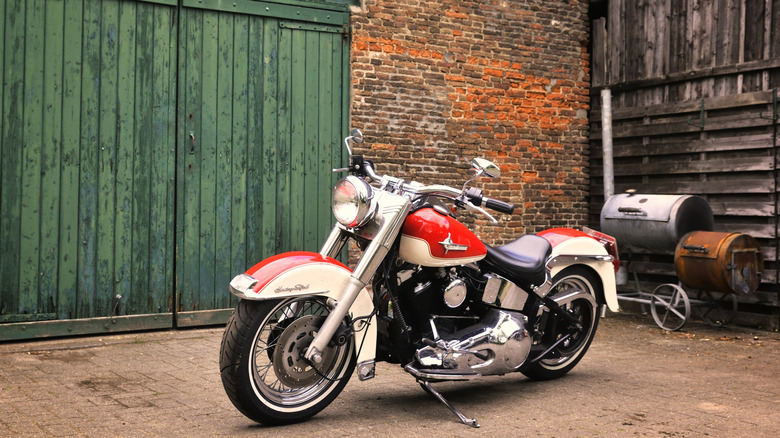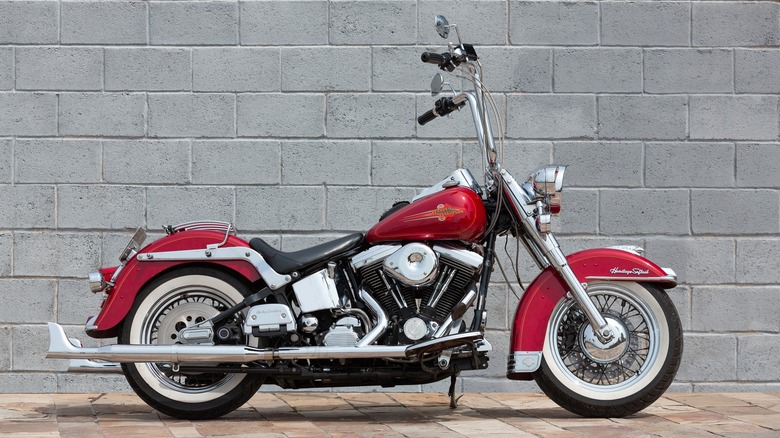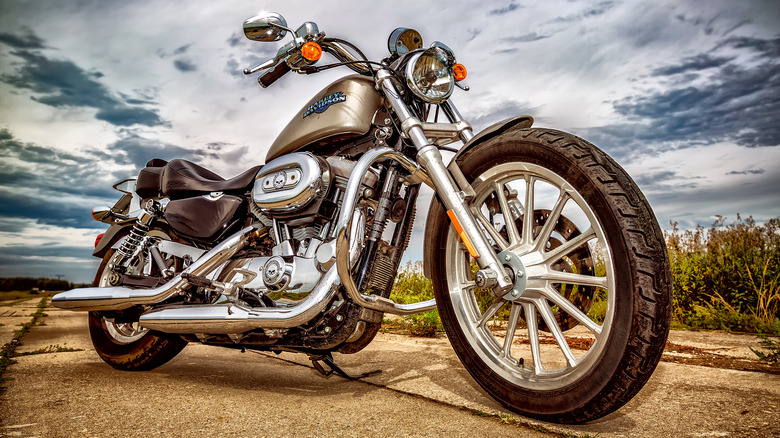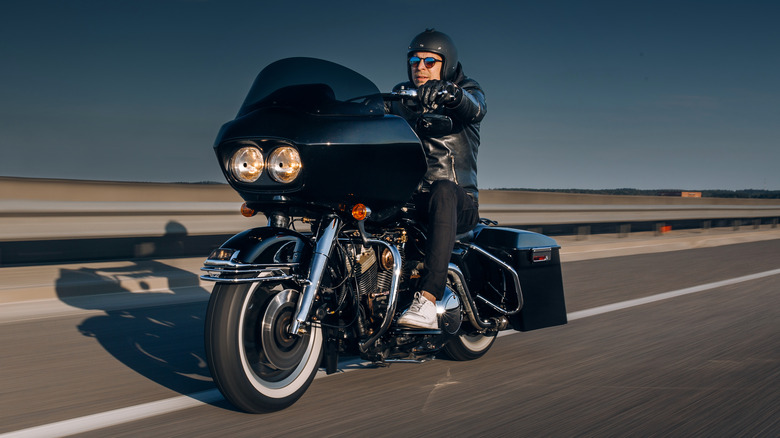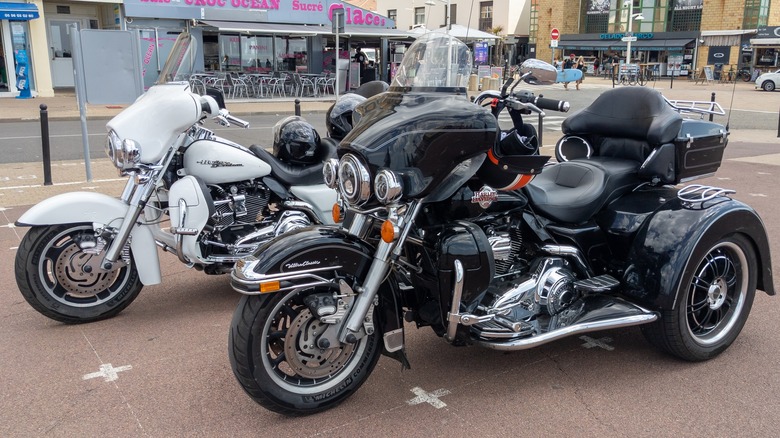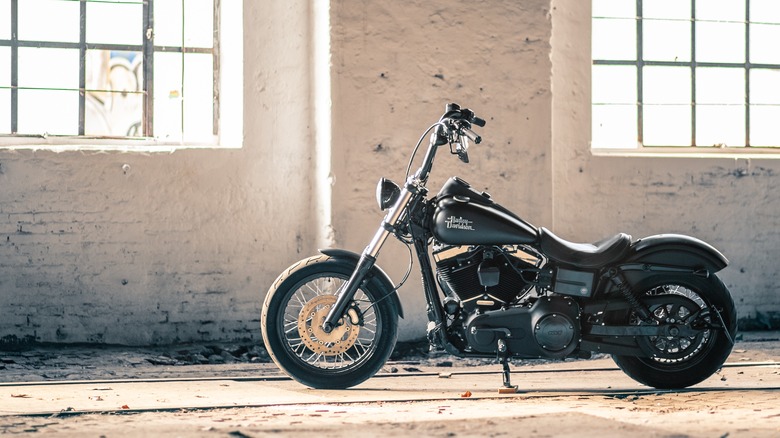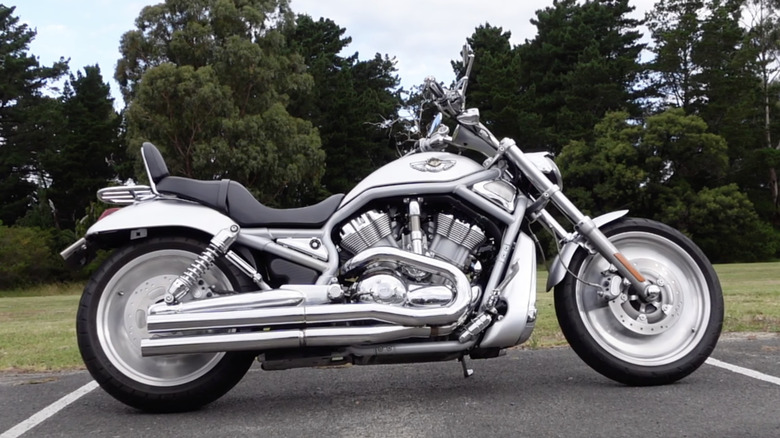Different Harley-Davidson Frame Types Explained
Founded in 1903, the styling and design of Harley-Davidson motorcycles have come a long way since the company's very first motorcycle launch — the Model 0. The motorcycle was based on a bicycle-like frame, but was fitted with a modest engine that could reach speeds of up to 35 mph, which was fairly impressive for the time. This simple motorcycle frame served as the foundation for many modern-day Harley-Davidson bikes. However, over time, the company's motorcycle frames evolved pretty distinctly to cater to specific riding styles and aesthetic preferences.
Whether you're considering purchasing a new Harley-Davidson motorcycle and are curious about which frame would be the best fit for your needs, or you've taken a recent interest in motorcycles and want to learn more about what makes the bones of these legendary machines, here's a breakdown of the most iconic and enduring motorcycle frames. We've also delved a little into the history of each frame, so you know where it takes its inspiration from.
Softail
The Softail is perhaps the most distinct frame among Harley-Davidson's cruiser lineup, and what makes it so unique is that at first glance, it looks more like a hardtail. However, it features a concealed rear wheel suspension that's held in place by a swingarm. What this means for you as a rider is that you get to enjoy the retro aesthetic that Harley-Davidson motorcycles are famous for, all while enjoying the comfortable ride quality that rear-wheel suspension bikes are known for.
The frame, which was designed by Bill Davis, was launched by Harley-Davidson for the model year 1984 as the FXST Softail. Since then, the Softail has evolved pretty significantly, with the company incorporating new technologies and features into the bike. For instance, the first few Softail models didn't have rubber-mounted engines, and this meant more vibration during rides. However, to enhance rider comfort, Harley-Davidson eventually introduced a rubber-mounted Twin Cam engine for the Softail in later models.
That said, despite all the innovations and changes, the Softail continues to maintain its iconic look with clean lines and a low seat height. Over the years, the Softail has maintained its popularity, and the frame has been used for many different Harley-Davidson models, including the Breakout and Fat Boy. In fact, the frame design has even been adopted and used by other major motorcycle brands, including Honda, Yamaha, and Kawasaki.
Sportster
Faced with stiff competition from British motorcycles like Triumph and Norton, Harley-Davidson launched its first Sportster — the XL — in 1957 as a response. The motorcycle was heavily inspired by Harley-Davidson's K Series motorcycles, and borrowed design elements like the frame, suspension system, fuel tank, and fenders from this predecessor. However, the Sportster was fitted with a new engine, the Ironhead, and this went on to become a defining feature of the Sportster line for decades.
By 1979, the frame had become lighter and stiffer, and this was the last year you could purchase a manual kickstart Sportster. Over the years, Harley-Davidson continued to refine the motorcycle, introducing new technologies and comfort-focused features. New Sportster models were launched — some aimed at entry-level riders, while others catered to people who preferred high-performance motorcycles.
Despite these changes, the Sportster frame's lightweight construction, nimble handling, smaller promotions, and low seat height continue to remain core aspects of its identity. These features make the Sportster a fun bike to ride, and the good news is that the Sportster series has some of Harley-Davidson's most affordable motorcycles, making bikes from this line a great option for new riders.
Touring
The Touring frame, as the name suggests, is built to support long-distance riding. This motorcycle frame is one of Harley-Davidson's oldest and was launched in 1941 with the FL model in response to people asking for a more powerful bike. To meet the demand for better horsepower and torque, Harley-Davidson equipped FL motorcycles with a large 74-cubic-inch Big Twin engine.
Given that these bikes were meant to tackle extended journeys, many of the later Touring models featured design elements like fairings for protection against wind and drag, large fuel tanks to ensure less frequent refueling, and saddlebags for riders to stow their belongings. What's more, these touring motorcycles were also designed with advanced suspension systems to ensure rider comfort.
Another distinct feature of touring motorcycles is their wider frame. The motorcycle's bulkiness serves a purpose, which is to keep it stable while on the road. This is especially helpful for riders while off-road riding. Modern-day Harley-Davidson touring motorcycles even come with a range of rider safety enhancements as standard to keep you protected on the road.
Trike
The Trike is perhaps the most different-looking of all Harley-Davidson motorcycles. The company began experimenting with this type of motorcycle frame in the early 1900s, and the earliest version of this automobile was launched in 1911. This version was pretty basic, and simply featured a sidecar attached to the main motorcycle.
Subsequently, another version of the trike — called the Servi-Car — was launched by Harley-Davidson in 1931. This one was a hit with auto dealerships that required employees to deliver cars to customers' homes. Dealers often attached a tow bar to the bumper of the Servi-Cab and towed the brand-new car to the destination. The Servi-Cab was such a success that it remained in Harley-Davidson's lineup for a total of 41 years.
It was only in 2009, though, that the company launched a trike for its regular riders. This model had a different frame compared to that of other Harley-Davidson motorcycles. The most apparent difference was that these bikes had two rear wheels and a single front wheel, which added to their stability.
These motorcycles also supported a more natural seating position and didn't require much effort to balance, making it comfortable to ride for extended durations. Modern-day Harley-Davidson trikes also feature fairings to reduce head buffeting and rider fatigue. Keep in mind, though, that they have a wider frame than regular bikes — while this means you get plenty of storage space, it might make the vehicle harder to maneuver and park. Another downside of Harley-Davidson's trikes is that they're fairly expensive, with new models starting at $32,000. However, if you want a safer motorcycle, a trike is a solid option.
Dyna
Harley-Davidson launched the Dyna frame in 1991 with the Dyna Glide, and this frame borrowed features and design elements from the Sportster and Touring models. Given this, these motorcycles featured the lightweight Sportster construction, but had the more powerful Big Twin engine. Another signature feature of Dyna motorcycles was the exposed twin rear shock absorbers, unlike the Softail, which had concealed suspensions. Moreover, the motorcycle also had large, wide forks and rear fenders, as well as drag-style handlebars. This gave the Dyna an appealing, rugged look.
Dyna motorcycles also had stiffer frames than Softails, which made these motorcycles easier to handle when the road conditions were not ideal. They also lent themselves fairly well to customization, allowing riders to strip the bike and change parts, making the motorcycle truly their own.
All in all, the combination of a nimble frame, improved suspension tuning, and a robust engine made the Dyna a popular choice among riders at the time. Ultimately, though, Harley decided to pull the plug on the Dyna lineup in 2017, replacing it with a new Softail lineup.
V-Rod
The V-Rod, also called VSRC — which was short for V-twin racing street custom — was introduced by Harley-Davidson in 2001 for the 2002 model year. The motorcycle featured certain distinct design elements, including a larger liquid-cooled engine that was developed by Porsche, and a fuel tank that was placed under the seat as opposed to at the front. A cover for the air box and the coolant filling port was, in turn, located where the fuel tank usually is in traditional motorcycles. The V-Rod also had dual overhead camshafts, which ultimately resulted in more horsepower and enhanced performance.
These features caused the V-Rod to look and perform unlike other Harley-Davidson motorcycles. Later models, however, went through several cosmetic changes, like a change in the frame size (wider) and the use of a larger rear tire. These changes meant subsequent V-Rods (more specifically, the ones launched between 2007 and 2010) were heavier than their predecessors. Harley-Davidson continued to update the V-Rod's appearance and eventually made the motorcycle more sleek. The motorcycle, however, was discontinued by the brand in 2018.
